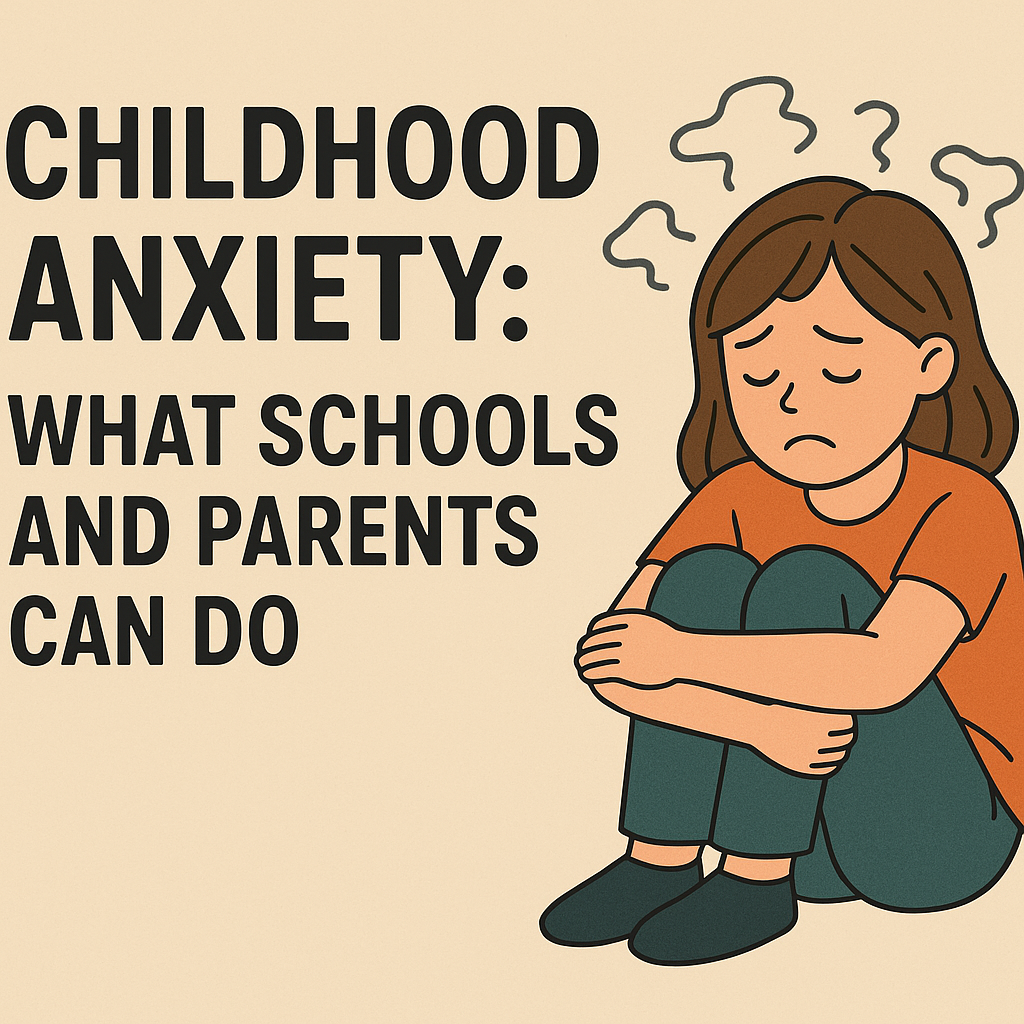🧠 Dealing with Childhood Anxiety: A Guide for Schools and Parents
Childhood anxiety is increasingly common, and if left unaddressed, it can hinder a child’s academic performance, social life, and emotional development. Both schools and parents play a vital role in identifying, understanding, and managing anxiety in children. Here’s a comprehensive guide to help.
1. 📚 Understand What Childhood Anxiety Is
- It's more than just "worrying" – it's a real emotional disorder.
- Common types: separation anxiety, social anxiety, and generalized anxiety disorder.
2. 🧩 Recognize the Signs Early
- Avoidance of school or activities.
- Frequent headaches, stomachaches, or crying spells.
- Excessive reassurance-seeking or perfectionism.
3. 🧑🏫 Train Teachers and Staff
- Conduct workshops on mental health awareness.
- Equip them to identify anxiety-related behaviors in classrooms.
4. 🏫 Create a Supportive School Environment
- Foster inclusive and non-judgmental classrooms.
- Encourage peer empathy and emotional expression.
5. 🧘♀️ Incorporate Mindfulness in Daily Routine
- Start mornings with deep breathing or meditation sessions.
- Offer short "mindfulness breaks" during the day.
6. 💬 Encourage Open Conversations
- Let children know it’s okay to talk about their feelings.
- Create "safe spaces" or "quiet corners" in classrooms.
7. 📝 Establish Consistent Routines
- Predictable schedules help reduce anxiety.
- Let children know what to expect each day.
8. 👨👩👧 Involve Parents Proactively
- Regular meetings to share observations.
- Provide resources for parents to continue support at home.
9. 🩺 Seek Help from School Counselors
- Encourage children to meet with counselors regularly.
- Offer one-on-one or group therapy sessions if possible.
10. 🎭 Use Art, Music & Drama as Outlets
- These expressive activities help children release and manage emotions.
- Great for children who struggle to verbalize feelings.
11. ⚖️ Avoid Overloading Children
- Reduce excessive academic pressure.
- Promote a healthy balance between schoolwork and play.
12. 📵 Manage Screen Time and Social Media
- Educate children and parents about the impact of digital overload.
- Promote tech-free zones/times at home and in school.
13. 🌿 Encourage Outdoor Play and Physical Activity
- Exercise is a natural stress reliever.
- Nature walks, games, and sports improve mental well-being.
14. 📈 Monitor Progress
- Keep track of behavioral or academic improvements.
- Adjust strategies based on what works best for the child.
15. ❤️ Show Patience and Compassion
- Healing takes time—avoid labeling the child as “weak” or “lazy.”
- Celebrate small victories and show consistent encouragement.
✅ Final Thoughts
Children with anxiety need a team effort to thrive. With informed teachers and supportive parents, we can build a nurturing environment where every child feels safe, understood, and empowered to succeed. 🌟
